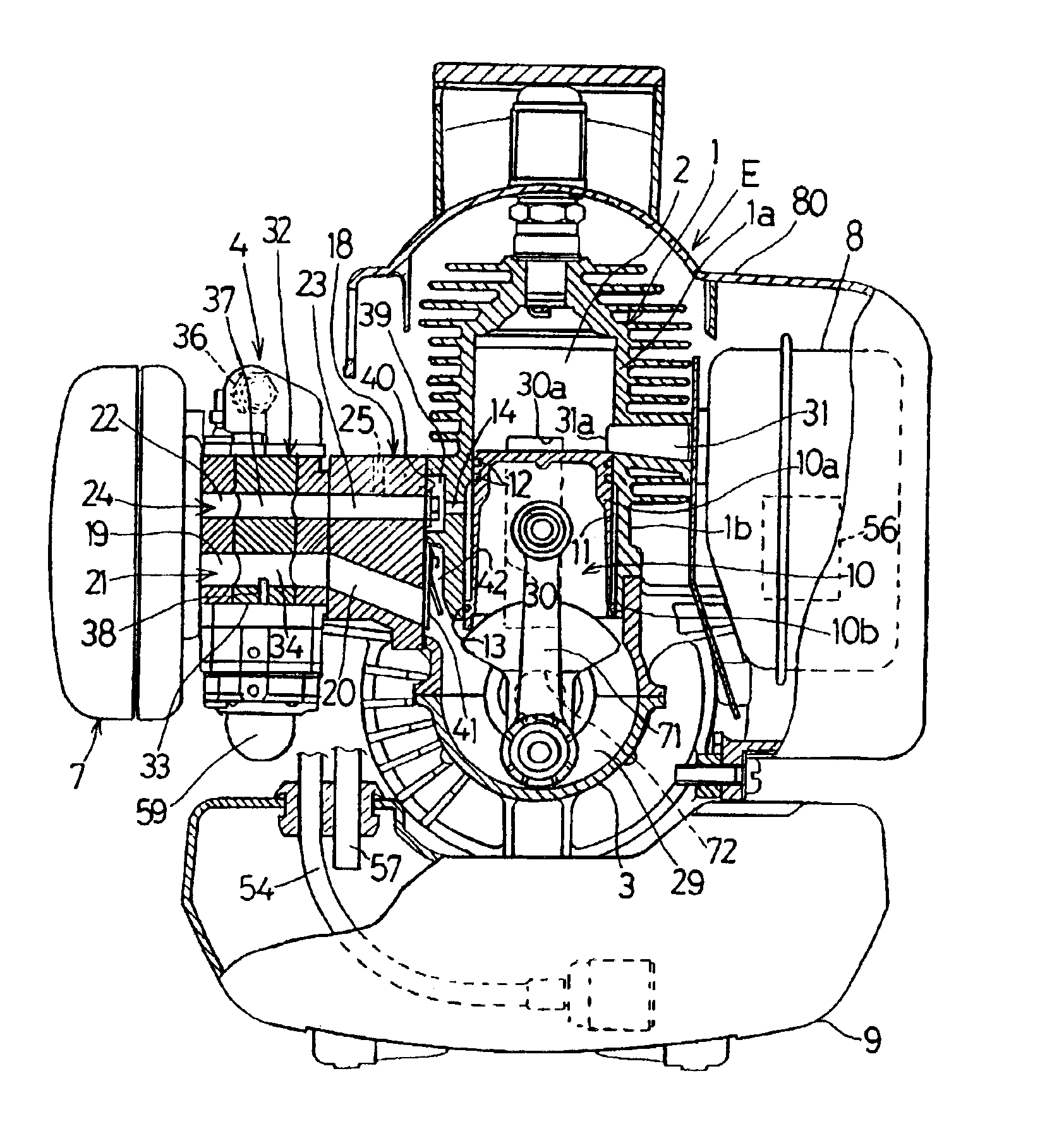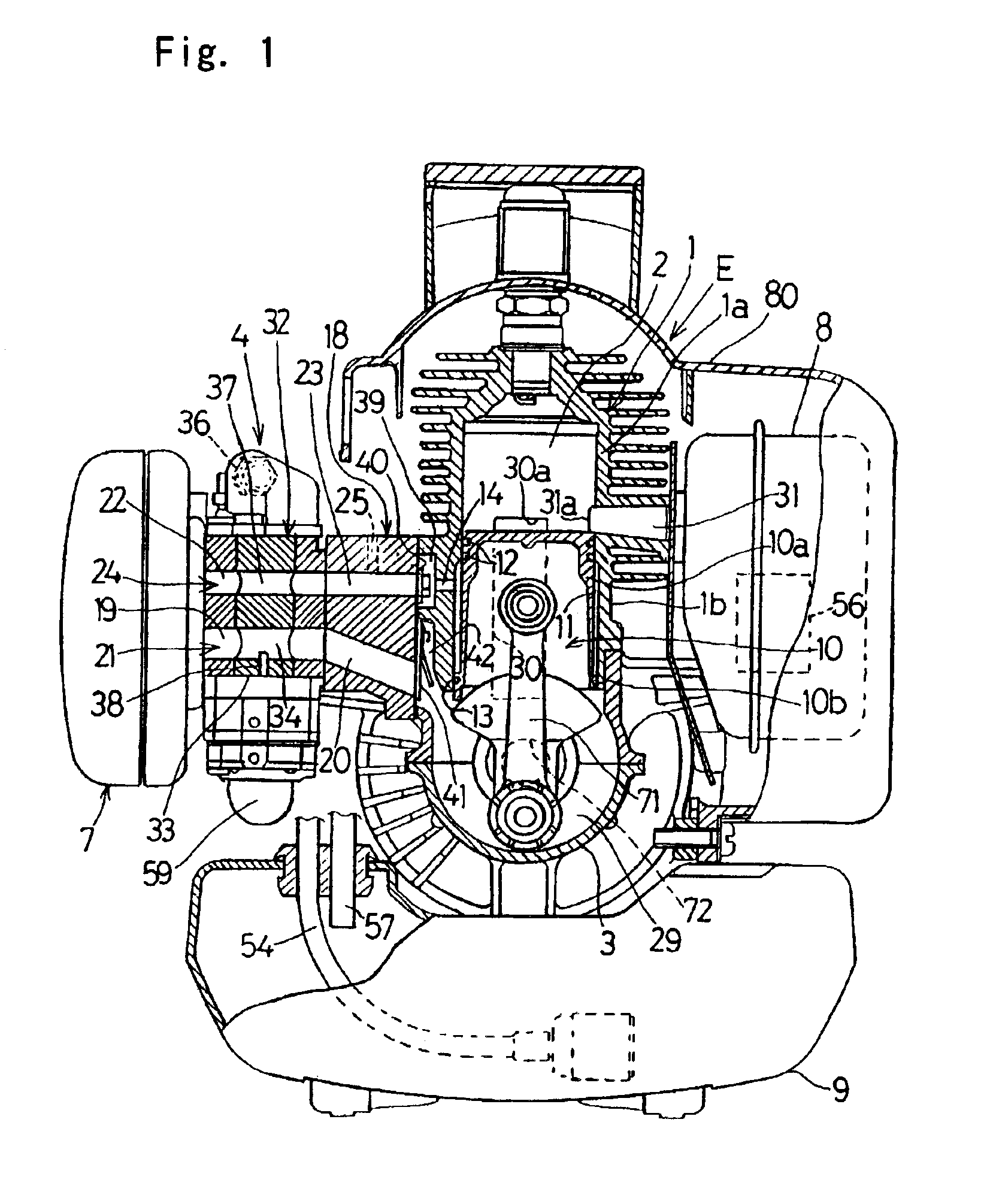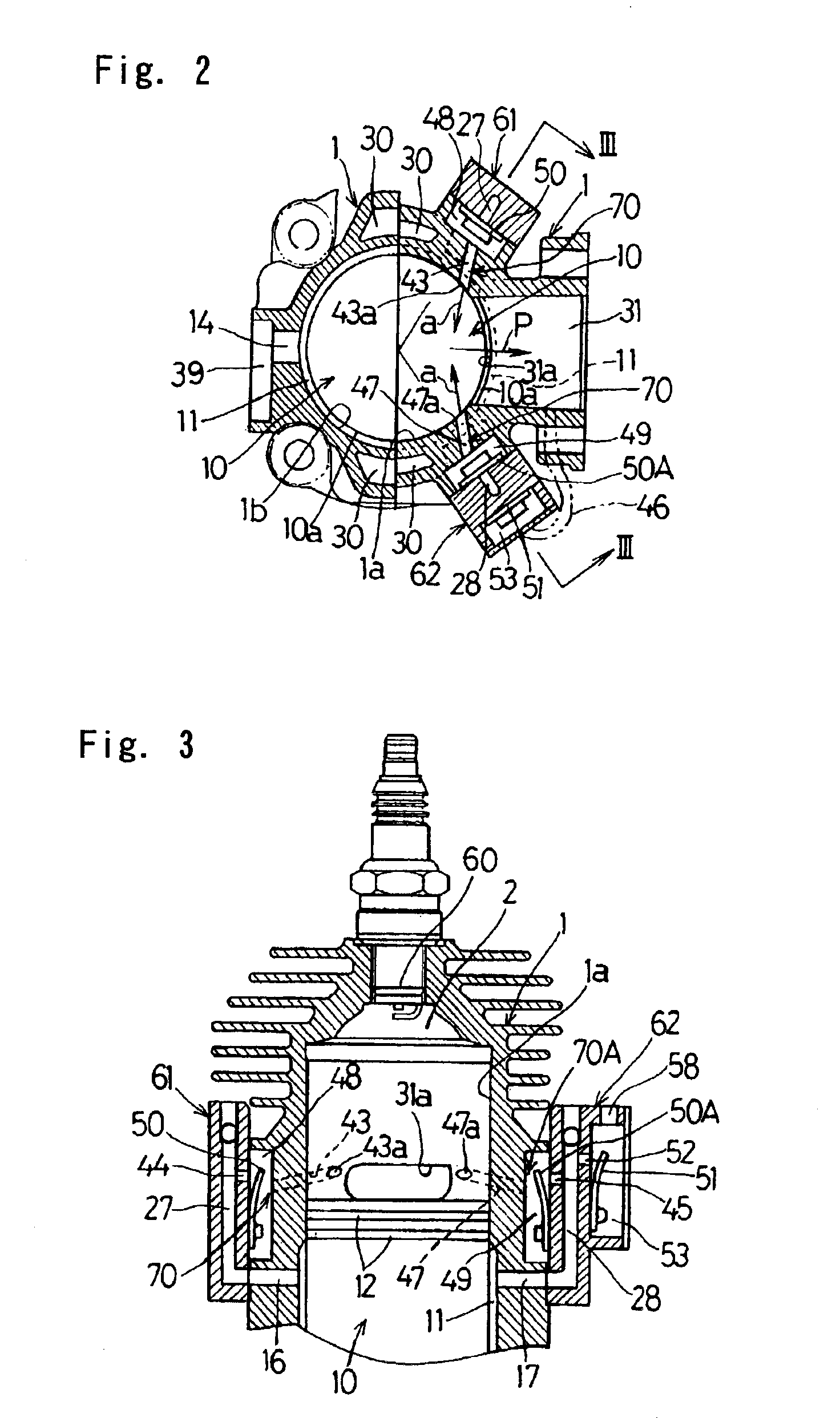Two-cycle combustion engine having two-staged piston
a two-stage piston and combustion engine technology, applied in combustion engines, machines/engines, mechanical equipment, etc., can solve the problems of inability to completely eliminate the increase in cost, and complication in structure, so as to achieve the effect of avoiding the undesirable blowing off phenomenon of the air-fuel mixture and simple structur
- Summary
- Abstract
- Description
- Claims
- Application Information
AI Technical Summary
Benefits of technology
Problems solved by technology
Method used
Image
Examples
third embodiment
[0058]In this third embodiment shown in FIGS. 5 and 6A to 6C, connecting paths 65 and 66 are defined in the cylinder block 1 so as to extend from the auxiliary chamber 11 to the outside in a radial direction as shown in FIG. 6A and are positioned at respective locations opposite sides of the exhaust passage 31 in the cylinder block 1 and spaced about 45° from the exhaust passage 31 about the longitudinal axis C of the cylinder bore in the cylinder block 1 as shown in FIG. 5. In addition, relatively large recesses communicated with the associated connecting paths 65 and 66 are formed at respective locations outside the connecting paths 65 and 66 in the cylinder block 1, and one of those recesses is covered by a lid member 67 to define a pressure accumulating chamber 63 serving concurrently as a third valve chamber, while the other of the recesses is covered by a valve chamber defining member 68 to define a pressure accumulating chamber 64 serving concurrently as a third valve chamber...
first embodiment
[0060]The valve chamber defining member 68 referred to above is closed by a lid member 74 with a fourth valve chamber 73 consequently defined between it and the lid member 74. This fourth valve chamber 73 is in communication with the pressure accumulating chamber 64 through a discharge port 69 that is adapted to be selectively opened or closed by a fourth check valve 51A accommodated within the fourth valve chamber 73. The pressure at which this fourth check valve 51A opens is so chosen as to be equal to or higher than the pressure inside the combustion chamber 2 at the time the scavenge outlet port 30a opens during the descending motion of the two-staged piston 10. Accordingly, when this fourth check valve 51A opens, the air flowing into the fourth valve chamber 73 can be discharged either to the outside of the combustion engine through the discharge mouth 58 or into the exhaust passage 31 through an exhaust tube (not shown). Also, as shown in FIG. 6A, the injection ports 43a and 4...
fourth embodiment
[0065]In the two-cycle combustion engine a valve chamber defining member 76 is fixed to the cylinder block 1 at a location radially outwardly of the auxiliary chamber 11 to define a single pressure accumulating chamber 75. This pressure accumulating chamber 75 is communicated with the auxiliary chamber 11 through a connecting path 77 extending in a direction perpendicular to the longitudinal axis C of the cylinder bore to form a part of each of the injection passages 70 and 70A. This connecting path 77 is selectively opened or closed by the third check valve 50 fitted inside the pressure accumulating chamber 75 that is positioned below the exhaust passage 31 in the cylinder block 1 as shown in FIG. 7B.
[0066]Air outlet ports 83 and 84 are defined on opposite sides of the pressure accumulating chamber 75 and are communicated with the injecting guide paths 43 and 47, as shown in FIG. 7A, through connecting passages 85 and 86 each in the form of a connecting pipe, respectively. The inj...
PUM
 Login to View More
Login to View More Abstract
Description
Claims
Application Information
 Login to View More
Login to View More - R&D Engineer
- R&D Manager
- IP Professional
- Industry Leading Data Capabilities
- Powerful AI technology
- Patent DNA Extraction
Browse by: Latest US Patents, China's latest patents, Technical Efficacy Thesaurus, Application Domain, Technology Topic, Popular Technical Reports.
© 2024 PatSnap. All rights reserved.Legal|Privacy policy|Modern Slavery Act Transparency Statement|Sitemap|About US| Contact US: help@patsnap.com










